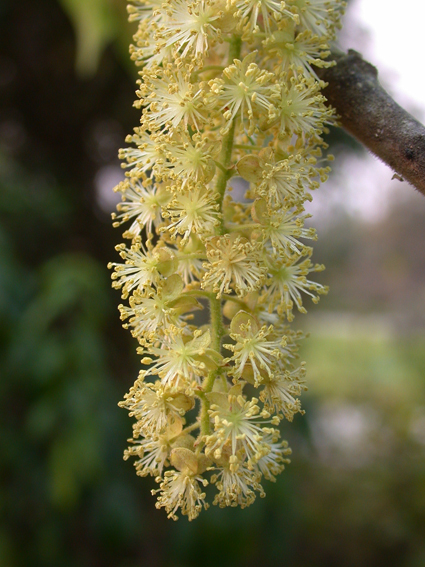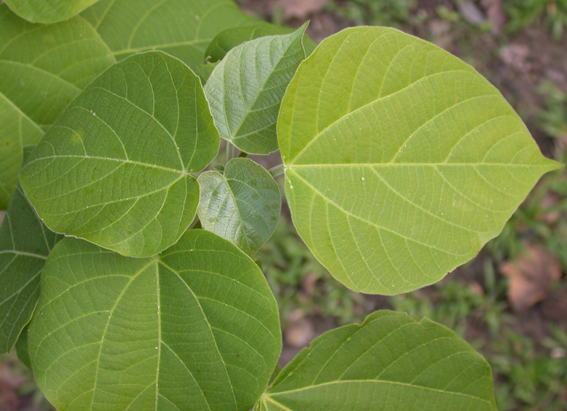A treat for a rhinoceros
The twig on which yesterday’s dragonfly had its sleeping quarters comes from a dear lowland jungle plant: the rhinoceros fruit (Mallotus nudiflorus syn. Trewia nudiflora, Euphorbiaceae).
 The specimen here at Dokmai Garden is a boy and it flowers right now. Like with willows and governor plums, its male flowers are an important pollen source for bee larvae.
The specimen here at Dokmai Garden is a boy and it flowers right now. Like with willows and governor plums, its male flowers are an important pollen source for bee larvae.
 Being described by Linnaeus already in 1753 implies this is an important plant. He learnt about the plant from Rheede’s book on medicinal plants of India. The oil from the seeds is a traditional remedy against cancer and pests. Members of the rubber tree family (Euphorbiaceae) are known to protect their children (the embryos inside the seeds) very well, using potent chemicals. Still, its fruits are eaten and dispersed by Rhinoceros.
Being described by Linnaeus already in 1753 implies this is an important plant. He learnt about the plant from Rheede’s book on medicinal plants of India. The oil from the seeds is a traditional remedy against cancer and pests. Members of the rubber tree family (Euphorbiaceae) are known to protect their children (the embryos inside the seeds) very well, using potent chemicals. Still, its fruits are eaten and dispersed by Rhinoceros.
The tree is common along lowland streams in Chiang Mai and its wider range includes India to Borneo. To our experience, the leaves are susceptible to unattractive galls and therefore not suitable for leisure gardens, but more suitable in botanical and medicinal gardens, or native riparian woodlands.
Do you remember my blog on budding duabanga? I have now updated the blog with pictures of the flower!
Text & Photo: Eric Danell
(Precipitation report: last night on the 17th of February we received 7 mm of rain in a very intensive shower combined with strong winds, electricity cut and spectacular lightning. Most refreshing).


